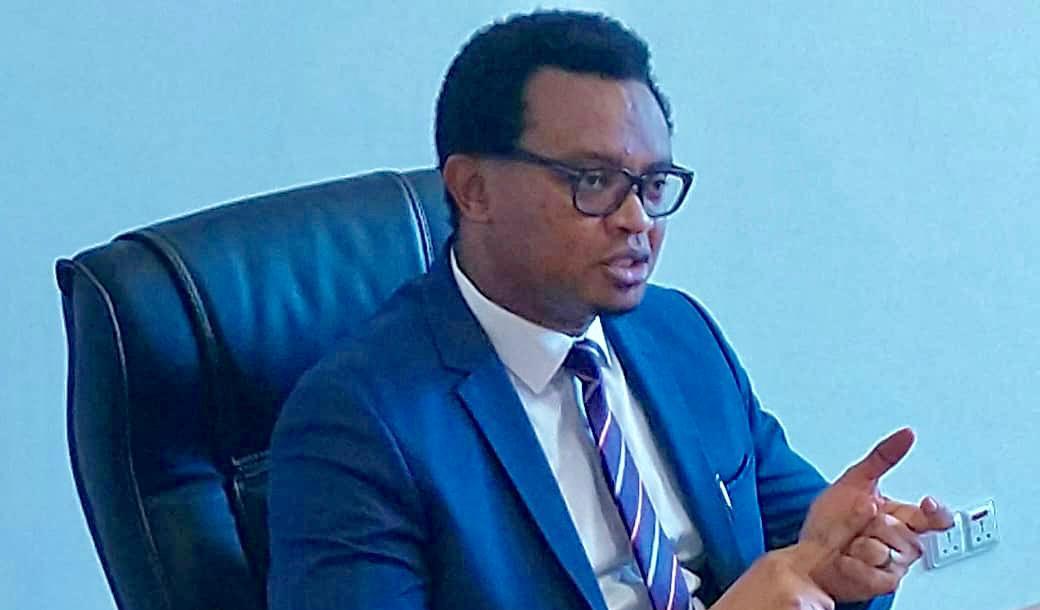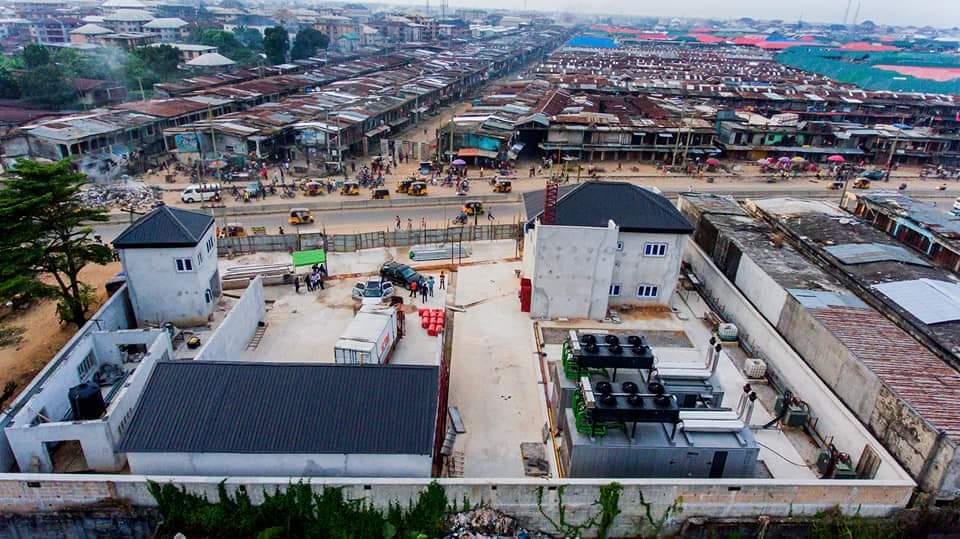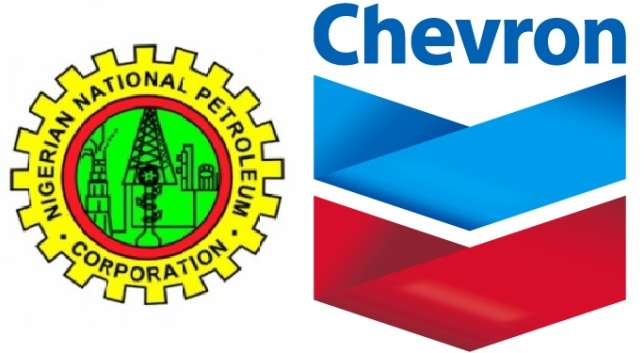ABSTRACT:
Global energy demand will nearly double by 2050. Most of the increase will come from the world’s emerging economies as a result of population growth and improved standards of living. The Nigerian Gas Flare Commercialization Programme (NGFCP) will play an important role in meeting this energy challenge by harnessing Nigeria’s flare gas for sustainable value and wealth creation.
Nigeria has the ninth largest gas reserves in the world, with proven reserves of 199tcf. However, a significant volume of associated gas, is currently being flared. Gas flaring is a tremendous waste of scarce natural resource and fuel, it also contributes to climate change. In 2017, Nigeria ranked 7th place in the league of gas flare nations with approximately 888MMscf/d from over 178 flare sites out of the more than 16,000 flare sites in 90 countries globally. Lost revenue from the flared associated gas is approximately US$1 billion. Recent efforts by the Federal Government of Nigeria (FGN) to end gas flaring by 2020 show strong policy approach and political will to harness these gas resources. In addition to the ratification of the Paris Climate Change Agreement, FGN has also endorsed the World Bank’s “Zero Routine Flaring by 2030” (ZRF) Initiative and established the Nigerian Gas Flare Commercialization Programme (NGFCP). This paper provides an overview of the NGFCP which seeks to provide a framework to eliminate gas flaring through technically and commercially sustainable gas utilization projects developed by competent third party investors who will be invited to participate in a competitive and transparent bid process. It also examines the recently gazetted Flare Gas (Prevention of Waste and Pollution) Regulations 2018, the legal basis for the implementation of the NGFCP and the payment regime (penalties) for gas flaring, which adopts the “polluter pays” principle, similar to a carbon tax. Results of work done to trigger up to 85 projects that will utilize flared gas, generate approximately 300,000 direct and indirect jobs and annual revenue generation/GDP impact estimated at U$1 billion/annum are also highlighted. The paper concludes that the NGFCP has been designed as the contribution of the petroleum sector to Nigeria’s IntendedNationally Determined Contributions(INDC) under the Paris Agreement and itis the first market driven program undertaken on this scale globally, making it a High – Impact Program.
INTRODUCTION
The global energy demand will nearly double by 2050. Most of the increase will come from the world’s emerging economies (Africa and India) as a result of population growth and improved standards of living. In the midst of this resolve for reliable and affordable energy, the Government and the oil and gas industry as well as investors alike need to work collaboratively to grow supplies, particularly of natural gas. In that mix, natural gas, as the cleanest burning fossil fuel, will play a prominent role in the decades to come. And yet we flare gas in Nigeria.
As a nation, gas flaring is a tremendous waste we cannot simply tolerate, especially from a climate change perspective. The flaring of natural gas wastes valuable resources and contributes to climate change. The NGFCP is working to reduce flaring associated with oil and gas production.When oil is extracted from a reservoir, gas is also produced as the oil is brought to the surface. This is known as associated gas. This gas can be captured and used alongside the oil. When there are no facilities to gather the gas, or they have insufficient capacity, it is sometimes flared, or burned. Flaring is also carried out for safety reasons to relieve pressure in the production system.Each cubic meter of associated gas flared results in about 2.5 kilograms of CO2e emissions and gas flaring account for 2% of all greenhouse gas (GHG) emissions. And in a world where we are under increased climate pressure, we cannot get rid of a precious natural resource and fuel in that way. The gas we flare is an important part of the global energy transition, the closet ally to renewables. The UN has described energy as ‘’central to nearly every major challenge and opportunity the world faces today. Be it for jobs, security, climate change, food production or increasing incomes, access to energy for all is essential” Nevertheless, even today, little or no access to energy deprives part of the world’s population of the opportunity to improve their quality of life.
In a world where we still have about 1.1 billion (i.e. 1 in 6 people on the planet) people without access to electricity (i.e. more than three times the population of the USA) and another 1 billion people struggling with unreliable supplies of electricity. More worrisome is the fact that 95% of these people are from sub-Saharan Africa and Developing Asia. Of that 1.1 billion, Africa has 588 million. Of that 1.1 billion, West African sub region, has the highest with 175million closely followed by Central Africa with 172 million. Now back home in Nigeria with a population of over 180 million people, only 12.5% of Nigeria’s population has access to power supply and others with epileptic supply. Yet we flare gas that can generate electricity for us and boost economic development.
It is based on this premise and other detrimental impact of gas flaring in the country that the Federal Government of Nigeria (FGN) took a policy position that gas flaring is unacceptable and will no longer tolerate it. This aligns with the National Gas Policy approved in June 2017 and with the Ministry of Petroleum Resources’ “7 Big Wins”, which are short – and medium-term priorities to grow Nigeria’s oil and gas industry. Just to add, the National Gas Policy commits to ending gas flaring, creating an enabling environment for investors, seeking value addition for gas, and improving governance in the sector. So it is in this regard, the FGN went ahead to initiate a number of actions to reiterate its commitment to ending the practice of gas flaring in our oil fields. Explicitly, the FGN ratified the 2015 Paris Climate Change Agreement (what everybody knows as COP21) in 2017, and is a signatory to the Global Gas Flaring Reduction partnership (GGFR) principles and the World Bank’s Zero Routine Flaring Reduction global flare-out by 2030 and submitted its first nationally determined contributions (NDC), which included gas flaring reduction as a mitigation measure to combat global warming whilst committing to a national flare-out target by year 2020.

Additionally, in acknowledgement that flared gas could be harnessed to stimulate economic growth, drive investments and provide jobs in oil producing communities and indeed for Nigerians through the utilization of widely available innovative technologies, the Federal Executive Council (FEC) approved the Nigerian Gas Flare Commercialisation Programme (NGFCP) as the mechanism for implementing Nigeria’s commitment to eliminate routine gas flaring. The NGFCP is a special program developed by the Ministry of Petroleum Resources (MPR), Nigerian National Petroleum Corporation (NNPC), the Department of Petroleum Resources (DPR) and the Implementation Team of the NGFCP comprising of advisor teams from the World Bank/GGFR, U.S Aid for international Development (USAID) under the leadership of a Ministerial Steering Committee reporting to the Minister of State for Petroleum Resources. The Programme was launched by the Minister of State for Petroleum Resources – Dr Ibe Kachikwu on December 13, 2016.
On its part, the Nigerian Gas Flare Commercialization Programme (“NGFCP”) will play an important role in meeting this sustainability, climate change cum air pollution and energy challenge by harnessing Nigeria’s flare gas for sustainable value and wealth creation. At NGFCP, we believe that as a nation we need to deliver the much needed energy for development and growth, we need to explore ways and means to scale through the Nigeria energy hurdle and put in place strategic measures to address the downside issues, challenges, gaps and aggressively pursue the upside opportunities.
This paper also hovers within the context of the United Nation’s seventeen (17) Sustainable Development Goals (SDGs’) which Nigeria is a signatory. And in mapping the connections between the conference theme(“Evolving Strategies for a Sustainable Petroleum Business in a fluctuating Oil Price Regime”), this paper lay emphasis on SDG No. 7. “Ensure Access To Affordable, Reliable, Sustainable And Modern Energy For All”. It is a fact that energy is a fundamental fulcrum of sustainability, without which most of the other SDGs cannot be achieved. Access to affordable, reliable, sustainable and modern energy is essential for rewiring the energy sector for economic growth; light up Nigeria, generate employment, basic education, poverty reduction, and health and safety. An estimated 2.8 billion people globally – 41% of the world’s population – had no access to modern energy sources and instead use solid fuels such as wood, charcoal and animal dung for cooking and heating.
BACKGROUND
Gas utilisation in Nigeria commenced in 1963 with gas sales by the Shell Petroleum Development Company of Nigeria (SPDC) to industrial users in Aba. In its bid to create value for associated gas (AG), which was routinely being flared by Producers, the Government initiated several projects to increase gas utilisation in the country from the mid-1960s to the late 1990s. These projects included gas supply to thermal power plants in Delta state, the Port Harcourt refinery in Rivers State, Power Holding Company of Nigeria (PHCN) Sapele, Delta Steel Aladja, Nigerian Fertilizer Company of Nigeria (NAFCON), the Ajaokuta Steel complex, the Egbin Thermal Power Station and the Aluminium Smelting Company of Nigeria (ALSCON) in IkotAbasi).
Oil and gas producers were also encouraged to utilise the produced AG for gas-lift, fuel for production operations and re-injection into the reservoir for conservation and reservoir pressure maintenance. Accordingly, of the 4.74 bscf/d of AG produced in 2015 about 4.26 bscf/d representing nearly 90% was utilised either by consumption or re-injection back into the reservoir.
GAS FLARING – CONTEXTS, ISSUES AND PERPECTIVES
All AG were routinely flared and disposed-off into the atmosphere during the early days of oil production in Nigeria. This practice of flaring 100% of AG lasted until the commencement of gas supplies to industrial users in Aba in 1963. In spite of this early source of utilisation and other government schemes, over 95% of AG was routinely flared over the next 15 years. Despite the intervention of the government, gas flaring increased sharply in the 1970s due to increased oil production that was triggered by higher international crude oil prices. Conversely the slowdown of crude oil production in the 1980s brought about a reduction in AG production and gas flaring. At the dip of production in 1987, flaring of AG had dropped from over 95% to 70%.
It was the commencement of production at the Nigeria LNG plant, however, that brought about a major leap in gas flare reductions in Nigeria. Since 1999, a variety of gas utilisation schemes and regulatory interventions forced gas flaring down to the current position of 11.4%. The ultimate goal for the government is to eliminate routine gas flaring by 2020, with unavoidable gas flaring limited to 2% of total gas production.
GAS FLARING – THE NGFCP ERA AND BEYOND
In 2017, Nigeria ranked 7th place in the league of gas flare nations with approximately 888MMscf/d from over 178 flare sites out of the more than 16,000 flare sites in 90 countries globally. Lost revenue from the flared associated gas is within the range of US$1 Billion. The NGFCP seeks to reverse this trend and wastage.
The NGFCP is designed as the strategy to implement the policy objectives of the FGN for the elimination of gas flares with potentially enormous multiplier and development outcomes for Nigeria. The objective of the NGFCP is to eliminate gas flaring through technically and commercially sustainable gas utilization projects developed by competent third party investors who will be invited to participate in a competitive and transparent bid process. The commercialisation approach has been considered from legal, technical, economic, commercial and developmental standpoints.
It is a unique and historic opportunity to attract major investment in economically viable gas flare capture projects whilst permanently addressing a 60 year environmental problem in Nigeria.
These third party investors are to access and utilize flared gas that is currently being sent to flare and convert into what we call the ‘Flare-Gas-to-Market-Products (FG-2-MP)’ and they must demonstrate project development experience and proven technologies in commercial application. Consistent with Nigeria’s commitments for reduction of GHG under the Paris Climate Change Agreement, the Program would reduce Nigeria’s CO2 emissions by approximately 13 million tons/year, which could be monetized under an emission credits/carbon sale programme. The NGFCP is designed as an important “climate change action plan” for the Nation. The NGFCP is the first market driven program undertaken on this scale globally – which means bidders will have flexibility of choosing which flare site(s) to bid for, the gas price, and the end market or gas product, as well as the technology to be used.
The NGFCP, also found out that the volume of gas flared in Nigeria could otherwise power millions of Nigerian homes as well as industrial areas with electricity access. Apart from the socio-economic value of otherwise using flare gas, flaring has been proven to have serious consequences on environmental health and social impacts in local communities in the Niger Delta and beyond. These include respiratory illnesses, acid rain and corrosion of roofs, amongst others. The potential alternative uses for flare gas, alongside the need to curb negative environmental, social and economic impacts of gas flaring, have made a national strategy for gas flare commercialization urgent and necessary. To achieve this, the NGFCP mapped out 6 – key cardinal objectives (principles), which is the NGFCP must: Reduce gas flaring; Benefit Niger Delta communities; positively impact the Nigerian economy; Present a market-driven solution for the flares; be bankable for investors and lenders, and avoid any adverse impact on the level or safety of Producers’ Exploration and Production (E&P) operations.
From 2005 to 2014, there has been an approximately 70% decrease in total flare volumes nationally (NNPC Statistical Bulletin 2014; EIA Country Overview: Nigeria, 2015). This puts the average annual gas flare reduction rate at 8%, at which rate it will be impossible to achieve the FGN’s target of zero flaring by 2020. Preliminary groundwork prior to launching the NGFCP included diverse case studies and economic analysis of various flare gas utilisation options for the country.
Major highlights from the economic analysis include:
1. harnessing gas from the top 50 flare points would reduce flare gas volumes by 80%, given 2015 gas flare locations and volumes as the baseline;
2. the majority of the gas flaring locations (about 65% of them) are onshore;
3. at least 80% of gas from the flaring locations can be viably utilised; and
4. about US$ 3.5 billion worth of investments is required to achieve the gas flare commercialisation targets by 2020.
The World Bank has estimated billions of cubic meters of natural gas is flared annually at oil production sites around the globe (According to GE Energy, this is about 145 – 150 BCM per year globally. And this is roughly equivalent to gas use in all US residences for a year; 5% of global natural gas production; 23% of US natural gas use; 30% of EU natural gas use; US$10 Billion lost revenue at $2.00 per MMBtu.
The climate Impact according to GE energy is around 350 – 400 million tonnes per year of CO2 and it is roughly equivalent to annual emissions from 77 Million cars (34% of US fleet); US$6 Billion carbon credit value at $15.00 per Metric Tonne.

HIGHLIGHTS OF THE NEW GAZETTED “FLARE GAS (PREVENTION OF WASTE AND POLLUTION) REGULATIONS 2018”
The Gazetted Flare Gas (Prevention of Waste and Pollution) Regulations 2018 approved on the 5th July, 2018 by His Excellency, Muhammadu Buhari (GCFR), President of the Federal Republic of Nigeria provides a legal framework to support the policy objectives of the Federal Government for the reduction of Green House Gas (GHG) emissions through the flaring and venting of natural gas.
The Regulations provide the legal basis for the implementation of the Nigerian Gas Flare Commercialisation Programme (NGFCP), introduces a new payment regime (penalties) for gas flaring which adopts the “polluter pays” principle and mimics a carbon tax. You will also notice that significant obligations are imposed on producers and gas flare out projects for the reporting of data in respect of activities related to gas flaring.
The objectives of these Regulations are:
1. The reduction of the environmental and social impact caused by the flaring of natural gas;
2. Protection of the environment;
3. Prevention of waste of natural resources; and
4. Creation of social and economic benefits from gas flare capture.
4As a synopsis, the thrust of the regulations is as follows:
1. Consistent with the Petroleum Act, Government takes all Flare Gas free of cost at the Flare and without payment of royalty;
2. All flares taken by the government to be subject to competitive bids;
3. Creates the Permit to Access Flare Gas with right to enter Flare Site & take Flare Gas;
4. Compels the installation of meters and the production and report of Flare Gas data;
5. Prohibits flaring and venting of gas except further to a certificate issued by the Minister in limited circumstances;
6. The current meager flare payments (penalties) of N10 per thousand standard cubic feet is increased, in the case of any one producing 10,000 barrels of oil or more, to $2.0 USD per thousand standard cubic feet of gas and, in the case of anyone producing less than 10,000 barrels of oil per day, to $0.50 USD per thousand standard cubic square feet of gas.
7. There are mandatory additional payments by the producer of $2.50 for:
1. Failure to produce accurate flare data.
2. Failure to provide access to flares or flare sites
3. Failure to sign a Connection Agreement;
8. In the event of continuous or egregious breaches, there is a possibility of suspension of operations, or a termination of the producer’s license.
THE NGFCP COMMERCIAL AND TRANSACTIONAL FRAMEWORK – IN BRIEF
The NGFCP has completed the design of the key Programme transactional, commercial framework and documentation. It is therefore expect to announce the first bid round for the flare gas to the public soonest. It is important to note that ONLY registered parties on the Programme web portal can participate in the NGFCP bidding process. The interface by those interested in the Programme with the NGFCP will be through the portal. Once they have registered, a further email will be sent to ALL registered parties notifying them to download the Request for Qualifications (RfQ), submit statement of qualification (SOQs) for participation in the programme, Programme Information Memorandum (PIM), the Programme Guidelines etc. Parties would only have access to relevant programme documents from the NGFCP Portal using their Log on details.
These auctions will present a significant opportunity for both domestic and international investors and lenders to participate in the largest Flare Gas monetisation programme in the world.
To become an Applicant, an entity will have submitted a SOQ which includes:
1. Mandatory information – essentially pro-forma information following attachments in the RFQ document including a Confidentiality Agreement
2. Technical Qualifications – information about an Applicant’s technical experience in the development and ownership and/or operation of Projects of a size equal or larger than US$ 5 million
3. Financial Qualifications – information about an Applicant’s capability and experience in financing Projects that utilise gas, highlighting any experience and capabilities related to financing Projects relying on Flare Gas in particular. Must have net worth of US$ 5 million
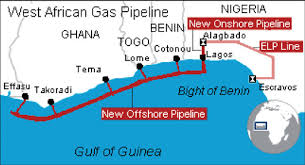 A Qualified Applicant may then pry or lease Flare Site Data upon payment of the corresponding Data Prying Fee (for all flare sites) or the Data Leasing Fee (per flare site). In response to the RFP, Qualified Applicants will be able to submit Proposals for the utilisation of Flare Gas from a single or multiple flare sites. Qualified Applicants will be able to submit a single Proposal, multiple Proposals, and/or alternative Proposals. For the purpose of the preceding sentence, alternative Proposals refer to separate Proposals which may cover different flare sites and/or utilisation technologies, and in respect of only one Proposal may the Qualified Applicant become Preferred BIdder.The Flare Gas will be sold under a Gas Sales Agreement to be executed between each successful Bidder whose Proposal is accepted by the FGN (Preferred Bidder) and the Seller (a FGN-authorised entity).
A Qualified Applicant may then pry or lease Flare Site Data upon payment of the corresponding Data Prying Fee (for all flare sites) or the Data Leasing Fee (per flare site). In response to the RFP, Qualified Applicants will be able to submit Proposals for the utilisation of Flare Gas from a single or multiple flare sites. Qualified Applicants will be able to submit a single Proposal, multiple Proposals, and/or alternative Proposals. For the purpose of the preceding sentence, alternative Proposals refer to separate Proposals which may cover different flare sites and/or utilisation technologies, and in respect of only one Proposal may the Qualified Applicant become Preferred BIdder.The Flare Gas will be sold under a Gas Sales Agreement to be executed between each successful Bidder whose Proposal is accepted by the FGN (Preferred Bidder) and the Seller (a FGN-authorised entity).
TRANSACTIONS AND THE COMMERCIAL AGREEMENT
Attached to the RFP documents will be draft Commercial Agreements (shown in figure 6 below).Bidders will have the opportunity to indicate what changes/amendments they would like to have made. Where Preferred Bidders have elected not to execute the Final Commercial Agreements, thereby exiting the NGFCP process, Reserve Bidders may take their place as Preferred Bidders and go through the same process
The NGFCP Transactional and Commercial Contractual Structures are:
1. Milestone Development Agreement (MDA) – between Flare Gas Buyer and FGN. FGB undertakes to implement its Project according to a set of milestones. FGB performance is ‘encouraged’ by a Milestone Bond
2. Gas Supply Agreement (GSA) – between FGB and FGN. Confers FGN title of Flare Gas to FGB. Contains the quantities of gas contracted for, the price and the Take or Pay terms
3. Connection Agreement (ConnAg) – between FGB and Producer. Contains the Flare Gas delivery terms and conditions, rules for the physical connection of facilities, and nomination procedures
4. Deliver or Pay Agreement (DoPA) – an undertaking of Producer with respect to ‘Guaranteed’ Flare Gas whereby, for a DoP Fee (paid by FGB to Producer), FGB receives a DoP Payment should Producer fail to deliver such guaranteed Flare Gas
5. Permit to Access Flare Gas (PAFG) – a permit granted to FGB (becoming Permit Holder (PH)) pursuant to the Regulations
On completion of all commercial/contractual agreement, the flare gas buyer (FGB) becomes a permit holder. The FGB will pay an Award Fee for Grant of Permit to Access Flare Gas. And simultaneously with the execution of the Final Commercial Agreements, Flare Gas Buyer will be awarded a Permit to Access Flare Gas (PAFG). This is a permit prescribed under the Regulations, and is granted by DPR (on behalf of FGN)
1. It permits Permit Holder to access the Flare Site(s) for the purpose of constructing the Flare Gas Connection Assets to the Producer’s facilities at all Flare Sites specified in the Permit [a single Project may be taking Flare Gas from more than one Flare Site]
2. It permits Permit Holder to take Flare Gas in the amounts contracted for under the GSA
3. It permits other access to those Flare Sites for operational reasons during the currency of the GSA
4. Permit Holder needs to follow the Producer’s safety and security protocols
5. Permit Holder must install metering, maintain logs and submit reports on gas utilisation, flaring and venting, on pain of having its Permit revoked
FLARE GAS PROJECT IMPLEMENTATION & OPERATIONS
The Flare Gas Buyers will implement its Projects according to the terms of their Milestone Development Agreements. An MDA is an agreement between Flare Gas Buyer and FGN with timed milestones to monitor performance. Performance is encouraged as each Flare Gas Buyer will have posted a Milestone Bond that may be drawn by FGN in instances where milestones are not met by their due dates.
Once the Project has been built and reaches its Commercial Operations Date (i.e. the Project has been started up and commissioned), the Project is operated under the Gas sales agreement (GSA). The term of gas supply (Project?) is defined in the GSA (and mirrored in the PAFG). Delivery of Flare Gas is governed by the connection agreement (ConnAg). The Deliver or Pay agreement ( DoPA – optional to the FGB) is essentially an insurance product whereby, for a DoP Fee payable to Producer, the FGB receives from Producer liquidated damages in the event that delivery falls short as to contracted quantity and/or specified gas composition range. The NGFCP is not prescriptive as to Flare Gas utilisation technologies
COMMUNITY DEVELOPMENT
All Projects will be obliged to act in accordance with the Nigerian Oil and Gas Industry Content Development Act (2010). One of the guiding principles of NGFCP is that it must benefit the Niger Delta communities [and by extension other communities for those Projects not in the Niger Delta]. It is hoped that all Projects will provide direct and indirect employment for communities. Possibly, some Projects may produce goods and services that directly benefit communities. Notwithstanding all of the above, part of a Project’s obligations during the operations phase will be to contribute to a Community Development Fund that will be used by communities in the vicinity of a Project for the purpose of community development. NGFCP is not prescriptive as to the type of community development – this will be decided on by the communities themselves – although each Project will be expected to complete a fully detailed Community Development Plan as one of its milestones per the MDA

COMMUNITY DEVELOPMENT PLAN – HOW IT WILL WORK
Important to note that this is “work in progress” and will only be finalised for inclusion in the RFP. Main proposed provisions:
1. Project will prepare a Community Development Plan in conjunction with the affected community/communities
2. Project and communities will sign a Community Development Agreement
3. Project will pay, from Project COD, into a Community Development Fund, and for the term of the GSA, a percentage of either Project Capex or Project Opex [tbd] on a periodic basis [monthly, quarterly, annually] in advance
4. The Community Development Fund will be administered jointly by the Project and the Community itself via a panel or board of trustees
5. The panel or board of trustees will decide how and on what community Projects the CDF will be spent
Community cooperation with the Project is expected, and there will be provisions whereby funding from Project to CDF may be suspended in certain circumstances of non-cooperation
THE BROADER IMPLICATIONS
So what does all this mean? Nigeria is and continues to be a nation blessed with ample energy resources that has been the backbone of its economic and social well-being. In the midst of a dynamic global economy, it is paramount that Nigeria ensures the continued pre-eminence of its gas industry so that it can serve as an engine and catalyst for its economy for the benefit of Nigerians for generations to come. It is therefore important to create sustainable growth for this sector through systematic and concerted efforts by all stakeholders. These include among others, developing and harnessing flared gas
CONCLUSION
In summing up, this paper has shown that energy is an important engine of economic growth, on which job creation, poverty reduction, good education, health and safety and shared prosperity depend. Clean, affordable and sustainable energy access is increasingly seen as a vital catalyst for wider social development. The paper also demonstrate that energy is a critical input for the achievement of the SDGs hence – Harnessing Nigeria’s Flare Gas towards affordable, clean and sustainable energy for economic development and climate change impact – Prospects & Opportunities
As earlier highlighted, the NGFCP economic analysis also shows that with the US3.5 Billion inward investments pumped in to implement the NGFCP, huge social and economic benefits would accrue to host communities in the Niger Delta, investors and the national economy as a whole. Benefits would include curbing pollution/climate change/global warming impacts in local communities and providing households with clean energy, particularly in unlocking LPG (cooking gas i.e. produce 600,000 MT of LPG per year). In summary, this paper pinpoints the programme could trigger up to 85 projects and generate approximately 300,000 direct and indirect jobs in total. The potential annual revenue generation/GDP impact to the federation account is estimated at U$1 billion/annum. This would be achieved by harnessing gas from the top 50 flare points thereby reducing the volume of flared gas by 80%.
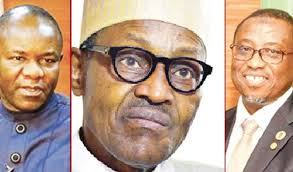 The paper also assert that the NGFCP would reduce Nigeria’s CO2 emissions by approximately 13 million tons/year, which could also be monetized under an emission credits/carbon sale programme. Additionally, the international development partners to the NGFCP have scrutinized and thus assert that the design of the NGFCP as detailed, affirming that it is an innovative, robust and scalable approach to gas flare reduction which could be replicable in many other gas flaring countries around the World; tagging it a “game changer” (first of a kind) consistent with the climate change action plans anticipated in the Paris Climate Accords. Overall, the paper concludes that the NGFCP has been designed as the contribution of the petroleum sector to Nigeria’s Intended Nationally Determined Contributions(INDC) under the Paris Agreement and it is the first market driven program undertaken on this scale globally, making it a High – Impact Program.
The paper also assert that the NGFCP would reduce Nigeria’s CO2 emissions by approximately 13 million tons/year, which could also be monetized under an emission credits/carbon sale programme. Additionally, the international development partners to the NGFCP have scrutinized and thus assert that the design of the NGFCP as detailed, affirming that it is an innovative, robust and scalable approach to gas flare reduction which could be replicable in many other gas flaring countries around the World; tagging it a “game changer” (first of a kind) consistent with the climate change action plans anticipated in the Paris Climate Accords. Overall, the paper concludes that the NGFCP has been designed as the contribution of the petroleum sector to Nigeria’s Intended Nationally Determined Contributions(INDC) under the Paris Agreement and it is the first market driven program undertaken on this scale globally, making it a High – Impact Program.
*As presented by Mr. Justice Derefaka, program manager, Nigerian Gas Flare Commercialization Programme (NGFCP), Office of the Honorable Minister of State for Petroleum Resources Federal Ministry of Petroleum Resources (MPR), at the 36th edition of the annual conference and exhibition of the Nigerian Association of Petroleum Explorationists (NAPE) held in Lagos, recently.

